Psilocybe allenii
$220.00 – $1,200.00Price range: $220.00 through $1,200.00
Psilocybe allenii|Buy Psilocybe cyanescens Online
Psilocybe allenii is a species of agaric fungus in the family Hymenogastraceae. Described as new to science in 2012, it is named after John W. Allen, who provided the type collection. It is found in the northwestern North America from British Columbia, Canada to Los Angeles, California, most commonly within 10 miles (16 km) of the Pacific coast.
The fruit bodies (mushrooms) grow on rotting wood, especially wood chips used in garden landscaping. The caps of the mushrooms are brown to buff, broadly convex to flattened and have a diameter up to 9 cm (3.5 in), while the white stipes are up to 9 cm (3.5 in) long and 0.7 cm (0.3 in) thick. As a bluing species in the genus Psilocybe, P. allenii contains the psychoactive compounds psilocybin and psilocybin, and it is consumed recreationally for its hallucinogenic properties. It is closely related to Psilocybe cyanescens, from which it differs macroscopically by the lack of a wavy cap margin.
Psilocybe allenii Discovering
Psilocybe allenii Officially identified in 2012, it takes its name from John W. Allen, the ethnomycologist who supplied the type collection. (A ‘type’ in biological terms is the definitive version of a specimen from which others can be compared and identified.) Despite its only recent ‘official’ recognition, it has long been a favourite of foragers in places such as San Francisco, even earning itself the pseudo-latin title Psilocybe cyanofriscosa — which it is still known as on some mycological message boards.
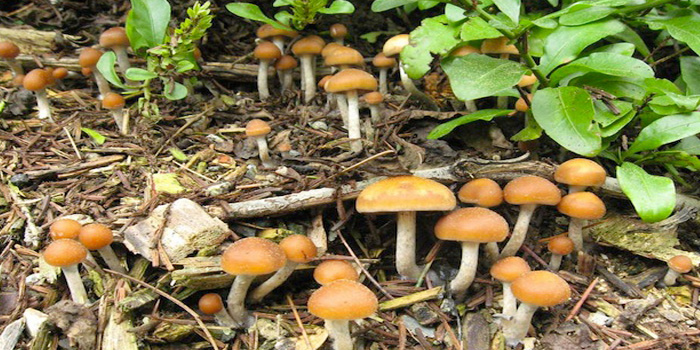
Its desirable medium-to-high potency, and relative availability in the wild, led American mycologist Alan Rockefeller to remark;
“If you go to Golden Gate Park in December you will see hundreds of hippies looking at the wood chip landscaping for Psilocybe cyanescens and Psilocybe allenii
Habitat and distribution
Psilocybe allenii is found in the northwestern North America, with a range extending from British Columbia[6] south to Los Angeles, California. It is most common in areas up to 10 miles (16 km) from the Pacific coast, although it has been collected 100 miles (160 km) inland. Fruitbodies grow scattered, in groups, or (more rarely) in clusters, on woody debris, such as wood chips often used in landscaping.[1] Favoured substrates include hardwood mulches made of oak, eucalyptus, Douglas fir, and alder.[6] Fruiting occurs in cold weather, generally from late September to January. The species can be readily cultivated on agar, grain spawn, and cellulosic material, including wood chips and sawdust.[1]
Look-Alikes
The curse of a doppel ganger is what actually kept P. allenii from being scientifically categorised for so long. It was confused, for many years, with the Psilocybe cyanescens. They grow in similar areas, with similar psychedelic potency and a very, very similar appearance — the one difference being P. allenii’s lack of a wavy cap — a common characteristic of the P. cyanescens. The definite distinction was found only with DNA sequencing. This, along with lack of wavy cap, showed enough difference with the P. cyanescens to merit Psilocybe allenii being granted its own species status.
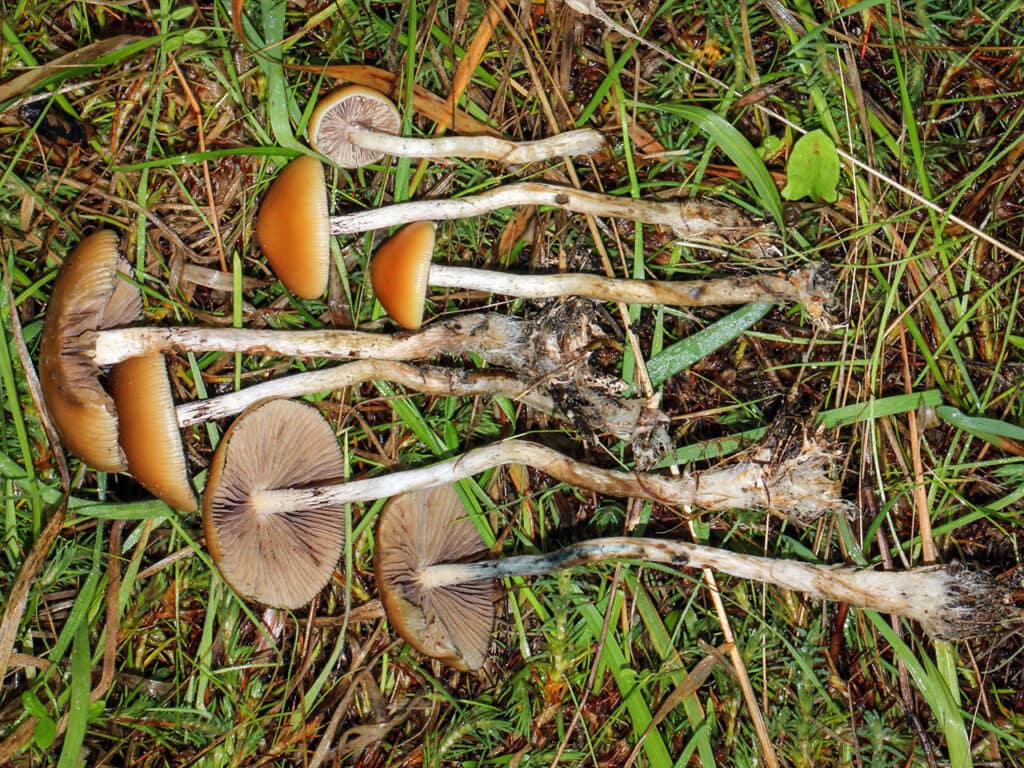
And, would you believe, that is not this newbie shroom’s only look-alike! P. allenii is also often mistaken for P. azurescens, P. serbica and P. subaeruginosa. All of these are psychedelic, containing the compounds psilocybin and psilocin. However, as they vary in potency and safety it is better not to take a risk if you’re not sure…(this is why we recommend our magic mushroom grow kits!)
Further Identification
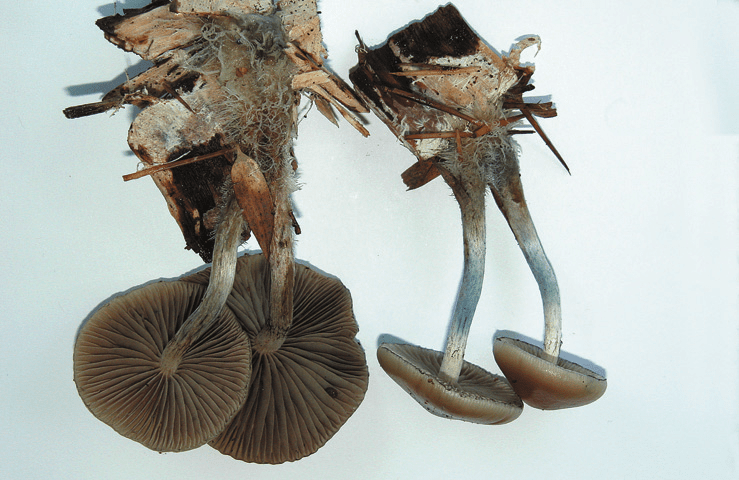
Can I eat it? : It is edible, but hallucinogenic. Proceed with caution.
Find it: Pacific Northwest of America, growing on wooden debris, wood chips, sawdust or similar.
When: Between September and January.
Family: Hymenogastraceae
Genus: Psilocybe
Species: allenii
| Quantity | OZ, 1/4 POUND, 1/2 POUND, POUND |
|---|
Reviews
There are no reviews yet.
Related products
Magic Truffles
Magic Truffles
Dried Magic Mushrooms
Dried Magic Mushrooms

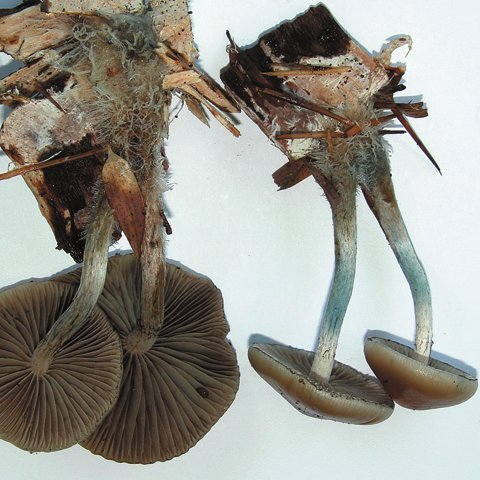
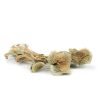

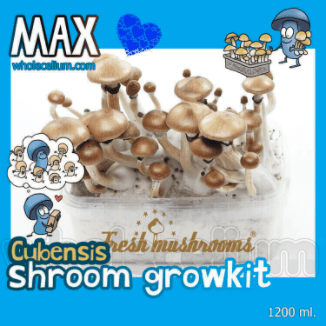

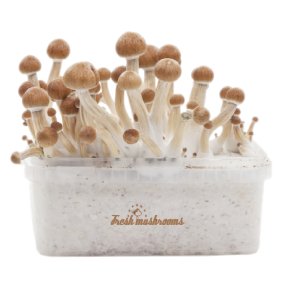

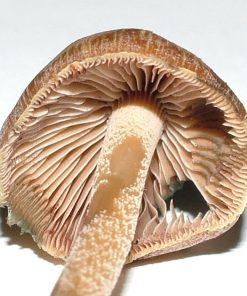




Be the first to review “Psilocybe allenii”